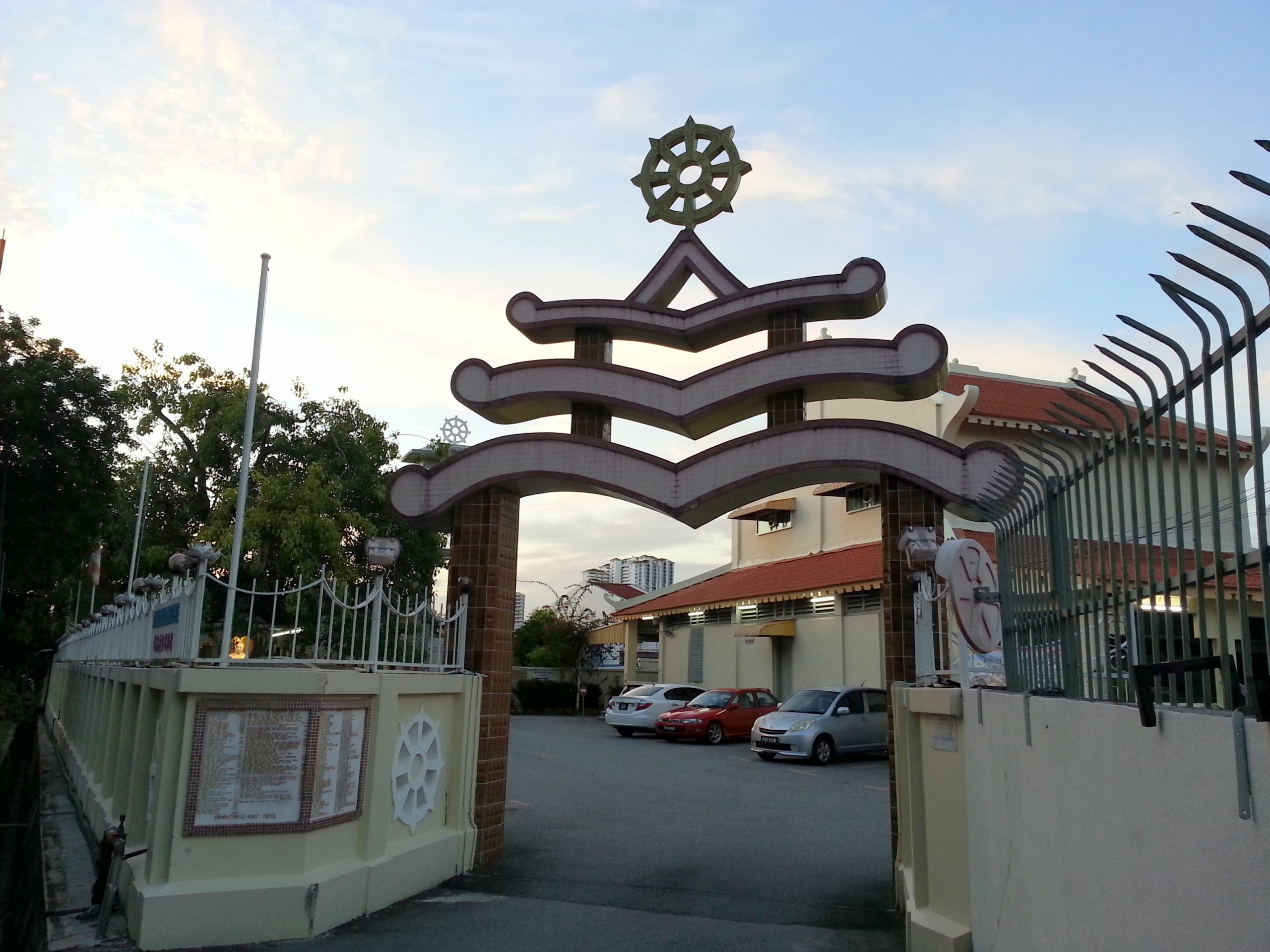Shrine’s History
The temple was founded in 1918 by A. Pemaratana Maha Thera, a Ceylonese monk who made a visit on Penang Island en route to Singapore. Whilst in George Town, A. Pemaratana resided within the Batu Lanchang Hokkien Cemetery where he gave sermons to a handful of devotees. The devotees, led by M. V. Gregory, a fellow Sinhalese bought a piece of land at Caunter Hall and presented it to the monk to set up the first Sri Lankan-style Buddhist temple in Penang. A shrine hall was then built with the support of the devotees for Pemaratana to carry out his missionary work along with a school named “Sāriputta” to teach Theravāda Buddhism and the English language. The temple was subsequently named as “Caunter Hall Buddhist Temple”. But since the given land is prone to flooding, a new site was required for the temple relocation. With the sudden demise of Pemaratana in 1927, the responsibilities of the temple were then given to his only pupil, W. Sumanasara Thero who later continued the relocation and construction of the additional structure for the temple in its present location in Jalan Kampar in the 1930s.
Legends Associated with This Shrine
In 2001, Mahindarama Buddhist Temple, located in George Town, became the first temple in Penang to house the relics of the Buddha. The two bone fragments of the Buddha had been presented to the temple’s Chief Monk, Ven. E. Indaratana Maha Thera, while he was in India during the previous year. The relics are currently on display within the temple’s main prayer hall.

Architectural Relevance of This Shrine
The architectural style here is closer to Southeast Asian style, but the details are a bit Chinese.

Shrine’s Map Location and How to Go There
BY AIR
The nearest airport is the Penang International Airport
Shrine Timings
The shrine is open every day between 9am–12pm and between 1:30–5pm.
Events Celebrated at This Shrine
Candle Lighting Day, Katina ceremony and the Annual Wesak Festival are the notable events
Extra Information About this Shrine
Several additional structures were built for the temple including a library and a school which was completed in 1957 and 1959 respectively, followed by a bell tower in 1969 and later a multi-purpose building in 1991. In 2001, the temple was chosen as the first temple in Malaysia to house the Buddha’s relics which then received by the temple’s Chief Monk, E. Inda-rátana Maha Thera. The two bone fragments of the Buddha are currently displayed within the temple’s main prayer hall. Pema-rátana’s ashes were enshrined in a stupa erected at the temple compound. His legacy can also be seen to this day in the form of the temple’s ficus religiosa (Bodhi tree), said to be a descendant of the original Bodhi tree bought to Anuradhapura in Upatissa Nuwara (present-day Sri Lanka) by bhikkhunī Saṅghamittā under which Buddha attained enlightenment. The tree sapling was then brought from then British Ceylon in the 20th century and planted in the temple compound after Pemaratana’s demise in 1927. The main prayer hall called Sīma is adorned with carvings by Sri Lankan artisans with all the materials used for the decorations originally coming from Sri Lanka.






































